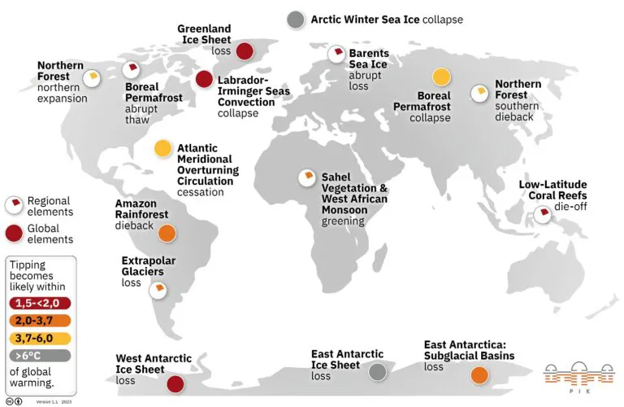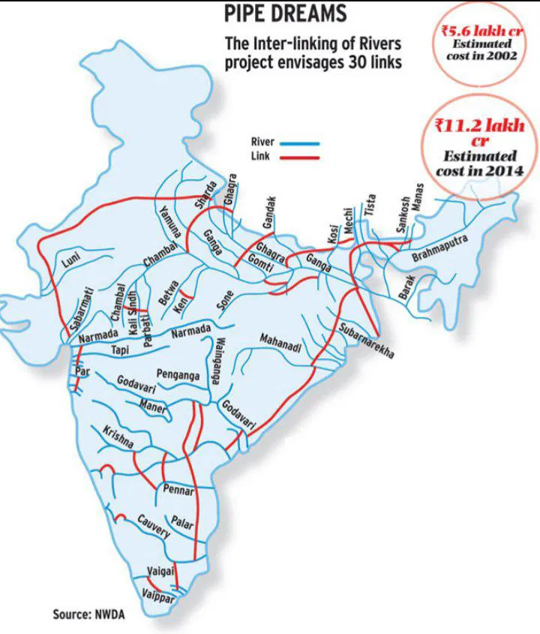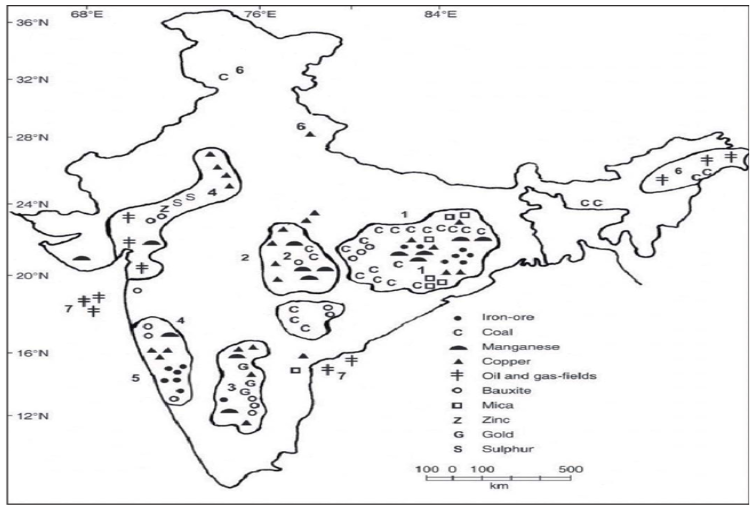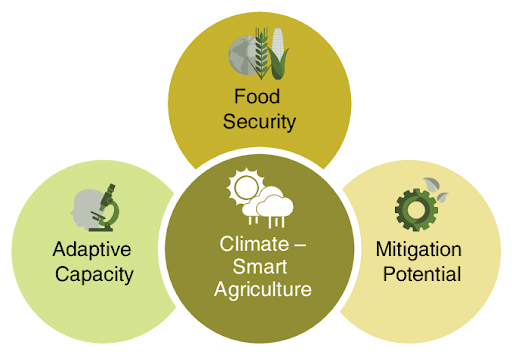10 Sep to 24 Sep, 2024
GLOBAL PLASTIC POLLUTION
Why in news : A recent study published in the journal Nature has revealed that India is the highest contributor to global plastic pollution.
About :
It is estimated that there were 369 million tons of plastics traded in 2020 alone, which is $1.2 trillion in value, a significant increase from $933 billion the year before. This number is projected to triple by 2040 if no measures are adopted to halt that pace. Annual costs of plastic pollution are estimated at $2.2 trillion, including $1.5 trillion in ocean damage, $695 billion in greenhouse gas (GHG) emissions, and approximately $25 billion in land pollution. ( 2022 data )

Types of Plastics
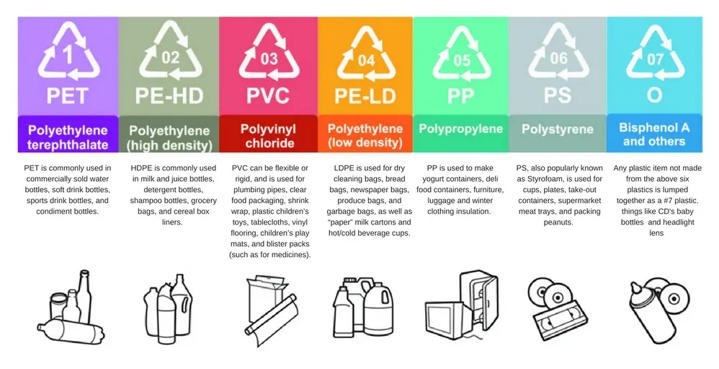
Causes of Plastic waste
- High Consumption : In India, over 40% of plastic waste is contributed by single-use plastic items like carry bags, wrappers, and straws. The country generates around 3.5 million tonnes of plastic waste annually.
- Inadequate Waste Management : Central Pollution Control Board (CPCB) revealed that only 9% of all plastic ever produced has been recycled globally, with 12% incinerated and the rest accumulating in landfills and the environment.
- Increased Urbanization: In the United States, urban areas contribute over 80% of the total municipal solid waste.
- Awareness and Behavioral Issues : According to the UN, approximately 8 million tonnes of plastic waste enter the oceans each year, mainly due to mismanaged waste in coastal areas, indicating a lack of awareness and poor disposal practices.
- Global Trade in Plastic Waste : After China's ban, plastic waste exports to Southeast Asia surged, with Malaysia's imports increasing by over 300% in 2018, leading to illegal dumping and burning of plastic waste.
- Plastic in the Fisheries and Shipping Industry : In the Great Pacific Garbage Patch, it is estimated that 46% of the total mass is comprised of discarded fishing nets, contributing to entanglement and death of marine species.
Challenges of Plastic Waste
- Choking the Environment: Mumbai's 2005 floods were exacerbated by plastic-clogged drains.
- Marine pollution : 90% of seabirds and 52% of sea turtles ingest plastic. Burning of plastic waste releases harmful dioxins and furans.
- Health risks: Plastic burning releases carcinogens and other toxic substances, leading to respiratory issues. Microplastics are even traced in drinking water sources and food products.
- Economic Implications : India could lose over USD 133 billion worth of material value used in plastic packaging by 2030.
- Surge in packaging waste : E-commerce market growth corresponds with increased use of plastic packaging materials, including bubble wrap, air pillows, and polybags.
- Agriculture pollution : Microplastics can accumulate in agricultural soils, affecting soil health, crop yields, and food safety.
Plastic Overshoot Day
It refers to a concept modeled after Earth Overshoot Day, which marks when humanity’s demand for natural resources exceeds what Earth can regenerate in that year. In 2024, the global Plastic Overshoot Day will occur on September 5th.
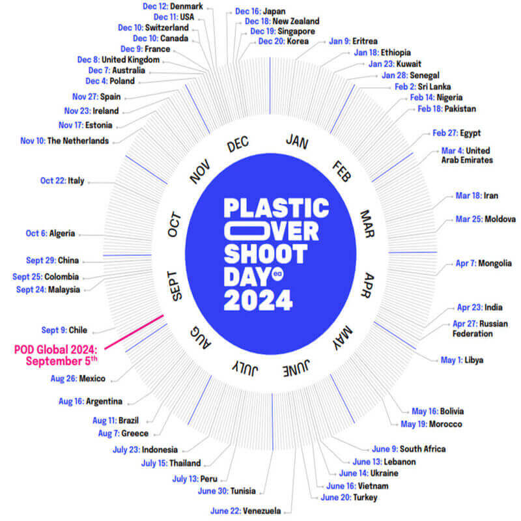
Arctic Plastic Crisis
The Arctic plastic crisis is the growing concern over the accumulation of plastic debris in the Arctic region, which has significant and deleterious effects on the local environment, wildlife, and potentially human health. The Arctic is a hemispheric sink for chemicals and plastics that are transported on atmospheric and oceanic currents from lower latitudes through a process known as global distillation or the “grasshopper effect “.
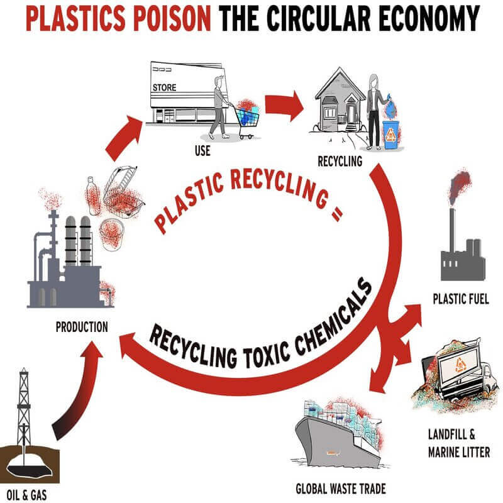
Key findings of Plastic waste In India
- The plastic pollution from India amounts to roughly one-fifth of global plastic emissions. India’s waste generation rate is approximately 0.12 kilograms per capita per day.
- Global South countries, such as India, often rely on open burning for waste management, while the Global North uses controlled systems, leading to less unmanaged waste.
- The Public Account Committee observed from CAG’s 2022 audit findings that many state pollution control boards (SPCBs) did not provide data on plastic waste generation for the period 2016-18 and there were inconsistencies in data shared by urban local bodies (ULBs) with SPCBs.
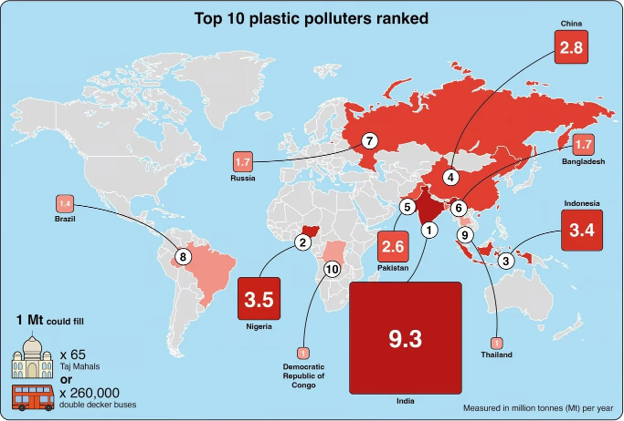
India’s Efforts In Tackling Plastic Waste
- Extended Producer Responsibility (EPR): Making plastic manufacturers responsible for managing and disposing of the waste generated by their products.
- Plastic Waste Management (Amendment) Rules, 2022: Prohibits manufacture, import, stocking, distribution, sale and use of plastic carry bags having thickness less than 120 microns.
- Swachh Bharat Abhiyan: National cleanliness campaign, which includes the collection and disposal of plastic waste.
- Plastic Parks: Specialized industrial zones for recycling and processing plastic waste.
- Beach clean-up drives: Beach clean-up drives to collect and dispose of plastic waste from beaches.
Global Efforts In Tackling Plastic Waste
- London Convention: The 1972 Convention on the Prevention of Marine Pollution by Dumping Wastes and Other Matter.
- Clean Seas Campaign: The United Nations Environment Programme launched the Campaign in 2017. It became the largest global campaign to raise awareness on plastic pollution and marine litter.
- Basel Convention: In 2019, the Basel Convention was amended to include plastic waste as a regulated material.
- UN Environment's #BeatPlasticPollution campaign, launched in 2018, promotes global action and individual responsibility in reducing plastic waste.
- The Ocean Cleanup project targets ocean plastic pollution with innovative technologies like the "Interceptor" to remove plastics from rivers before they reach the ocean.
Way Ahead
- To tackle the challenge of plastic pollution there is a need for behavioral change and strengthening of the institutional system for the collection, segregation and recycling of plastic waste.
- Under the UN Environment Assembly Resolution 5/14, the Intergovernmental Negotiating Committee (INC) is responsible for delivering a legally binding global plastics treaty by the end of 2024.
Source :
Where to use :
Paper I ( General Studies ) : Plastic pollution , Environmental Degradation
Paper III ( General Studies ) : Environment Conservation & Protection
CARBON MARKET IN INDIA
Why in news : The Ministry of Power and Ministry of Environment will develop Carbon Credit Trading Scheme for Decarbonisation.
About :
What are Carbon Markets ?
Essential components of cap-and-trade programs designed to reduce greenhouse gas emissions. Often referred to as Emissions Trading Systems (ETS), governments or groups of governments set an overall emissions cap and allocate emission limits to entities—such as countries or companies—covered by the rules.
Types of Carbon Markets
- Voluntary Carbon Markets (National and International): These refer to the issuance, buying and selling of carbon credits, on a voluntary basis.
- Compliance Markets: These are created as a result of any national, regional and/or international policy or regulatory requirement.
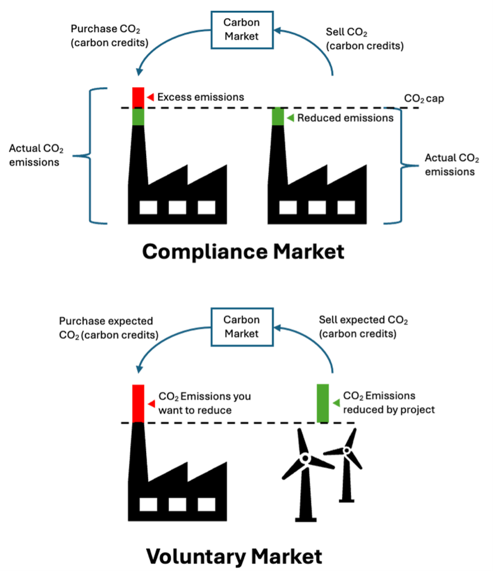
Working Mechanism of Carbon Markets
- Cap and Trade: Sets a limit on total emissions, with entities receiving and trading allowances for their permitted emissions.
- Carbon Credits and Allowances: Tradable permits representing one tonne of CO₂ reduction or removal, which can be bought and sold in the market.
- Pricing Carbon: Assigns a cost to carbon emissions, motivating companies to reduce emissions and trade surplus credits if below their limit.
Examples of Carbon Markets
- Indian Voluntary Carbon Market: Voluntary carbon credits are generated by projects that go beyond regulatory requirements. These projects might involve afforestation, renewable energy, or energy efficiency improvements.
- Global Carbon Markets: The World Bank estimates that carbon trading can reduce the global cost of implementing nationally determined climate goals by more than half.
Major Challenges Related to Carbon Taxation in India
- Economic Impact on Industries : A carbon tax could heavily affect India's energy-intensive sectors like steel, cement, and textiles.
- Regressive Impact on Lower-Income Groups : Carbon taxes can disproportionately burden lower-income groups due to their higher energy expenditure relative to income.
- Limited Effectiveness : While reducing CO₂ emissions from fossil fuels, carbon taxes have a limited overall impact, as noted by the World Economic Forum.
- Challenges in the Informal Sector : India's large informal workforce, making up 90% of employment, complicates effective carbon tax enforcement.
- Carbon Leakage Risk : Industries may relocate to regions with weaker regulations, undermining the effectiveness of carbon taxes.
Measures India can adopt for Establishment of Carbon Market
- Phased Carbon Tax Rollout :India can implement a carbon tax gradually, starting with a low rate and increasing it over time to ease industry transition.
- Border Carbon Adjustments for Fair Competition : Introduce border carbon adjustments to prevent carbon leakage and protect domestic industries from international competition.
- Incentivizing Clean Technology Adoption : Pair the carbon tax with incentives for technology transfer and clean technology adoption, especially for SMEs.
- SME Carbon Credit Pooling : Develop a cooperative model for SMEs to collectively engage in the carbon market, enhancing their participation and benefits.
- Boosting Green Finance : Build a strong green finance ecosystem to support and expand the carbon market.
Source :
https://www.downtoearth.org.in/climate-change/india-to-get-its-own-carbon-market
Where to use :
Paper III ( General Studies ) : Environment , Carbon markets
ARCTIC AND ITS IMPACT ON MONSOON
Why in news : A study by India’s National Centre for Polar and Ocean Research (NCPOR) and South Korea’s Korea Polar Research Institute, published in Remote Sensing of Environment (June 2023), shows the seasonal changes in Arctic sea ice affecting the Indian monsoon.
About :
Climate change plays a significant role in altering monsoon patterns. Climate models reveal that the surface temperatures of the Indian, Atlantic, and Pacific Oceans, and the circum-global teleconnection (CGT), significantly influence the ISMR ( Indian Summer Monsoon Rainfall).
Impact of Arctic Sea Ice on Indian Monsoon
- Central Arctic Sea Ice Decline : Reduced sea ice cover in the Arctic Ocean and its surroundings results in diminished rainfall over western and peninsular India, but an increase in precipitation in central and northern India. This occurs due to enhanced heat transfer from the ocean to the atmosphere, intensifying Rossby waves, which in turn modify global weather patterns. Stronger Rossby waves create high pressure over northwest India and low pressure over the Mediterranean, shifting the subtropical easterly jet northward, which leads to increased rainfall over western and peninsular India.
- Low Sea Ice in the Barents-Kara Sea Region : Reduced sea ice in the Barents-Kara Sea raises atmospheric pressure over southwest China and contributes to a positive Arctic Oscillation, affecting global climate patterns.Lower sea ice levels lead to increased heat release, resulting in calm, clear skies over northwest Europe. These changes disturb upper atmospheric conditions in subtropical Asia and India, leading to higher rainfall in northeastern India, while central and northwest regions receive less precipitation.
- Role of Climate Change : The warming of the Arabian Sea, along with additional moisture from surrounding water bodies, further disrupts weather patterns, increasing the variability of monsoon rainfall.
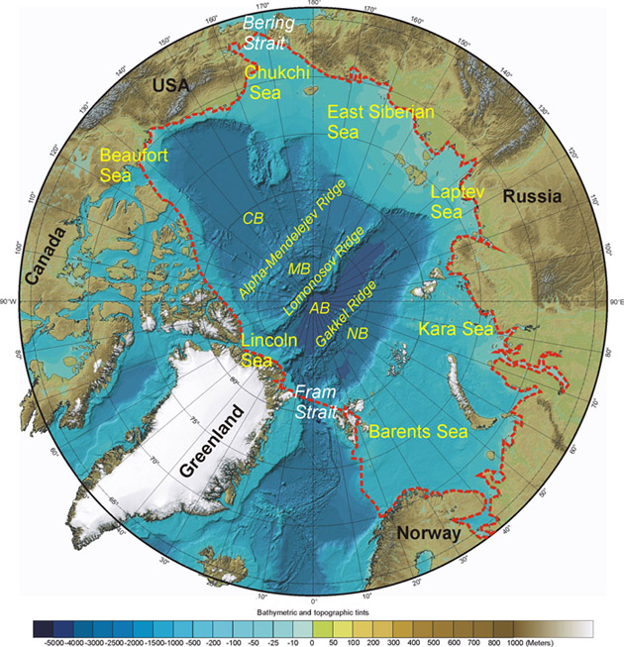
Key Findings related to Surplus Rain in North-Western (NW) India
- Increased Moisture from the Arabian Sea : Rising moisture inflow from the Arabian Sea is causing wetter monsoons in northwest India, a trend likely to persist under high emissions scenarios.
- Changes in Wind Patterns : Stronger winds over the Arabian Sea and weaker winds over northern India trap moisture in northwest India, boosting rainfall. These wind changes increase evaporation from the Arabian Sea, further contributing to higher precipitation in the region.
- Shifts in Pressure Gradients : Increased pressure near the Mascarene Islands and reduced pressure in the equatorial Indian Ocean have intensified monsoon winds, leading to more rain in northwest India.
- Amplified East-West Pressure Gradient : Stronger Monsoon Winds: A heightened east-west pressure gradient, driven by high pressure over the eastern Pacific, may further amplify monsoon winds, increasing the likelihood of heavier rains in the future.
Source :
Where to use :
Paper 1 ( Geography ) : Climatology
Paper 1 ( General Studies ) : Indian monsoon and variability
Keeling Curve
Keeling Curve : The Keeling Curve is a graph that represents the concentration of carbon dioxide (CO₂) in Earth's atmosphere over time, measured at the Mauna Loa Observatory since 1958. It illustrates the rapid rise in CO₂ levels, which is linked to human activities like fossil fuel burning. The curve shows an increase from 315 ppm in 1958 to over 420 ppm today, emphasizing the acceleration of global warming.
Circular Economy
Circular Economy : The circular economy is an economic system aimed at minimizing waste and making the most of resources by reusing, recycling, and repurposing materials. It contrasts with the traditional linear economy, which follows a 'take, make, dispose' model. Examples include the recycling of plastics into new products or the repair of electronics to extend their lifespan, reducing overall resource extraction.
Pyrolysis
Pyrolysis : It is the thermal decomposition of organic materials at high temperatures in the absence of oxygen, producing bio-oil, biochar, and syngas. It is often used to convert waste materials like plastics and biomass into useful energy products. An example is the conversion of agricultural waste into biochar, which can improve soil fertility while sequestering carbon.
Teal Carbon
Teal Carbon : It refers to the carbon stored in freshwater ecosystems, such as wetlands, lakes, and rivers. Like blue carbon (in coastal ecosystems), teal carbon plays a crucial role in mitigating climate change. An example is the carbon sequestration potential of peatlands, which can store more carbon per unit area than forests but are vulnerable to degradation.
Climate Tipping
Climate Tipping Point : It refers to a critical threshold at which small changes in environmental conditions can lead to large, irreversible changes in the climate system. For example , the melting of the Greenland ice sheet is a tipping point—once a certain amount of ice melts, it may trigger unstoppable ice loss, leading to significant sea-level rise.
Places in News - 24 September 2024
1. Keoladeo National Park
Why in news : India’s first ‘teal carbon’ study, conducted at Keoladeo National Park in Rajasthan.
- In 1982, Keoladeo was declared a national park and then later listed as a World Heritage Site by UNESCO in 1985
- It is Located in the eastern part of Rajasthan.
- It was also known as the breeding ground for the rare and elusive to spot Siberian crane.
- Approx : Bharatpur
2. Kanwar Lake
Why in news : Once a haven for migratory birds, is now gradually disappearing.
- It is also known as Kabartal jheel.
- It is a residual oxbow lake, formed due to the meandering of Gandak river, a tributary of Ganga.
- It is covering the majority of the Indo-Gangetic plains in northern Bihar.
- The Wetland is an important stopover along the Central Asian Flyway, with 58 migratory waterbirds using it to rest and refuel.
- It is also a valuable site for fish biodiversity with over 50 species documented.
- Approx : Begusarai
3. Ankasamudra Bird Conservation Reserve
Why in news : The site has been recently added in the list of Ramsar Sites .
- The Site is a human-made wetland built for storing monsoon run-off water coming from the Tungabhadra River and providing irrigation to surrounding drought-risk areas.
- Excessive growth of the invasive alligator weed (Alternanthera philoxeroides), the shrub Prosopis juliflora and the African catfish (Clarias gariepinus) are threatening the native fish and waterbirds
- Approx : Vijayanagara District
4. Rayagada
Why in news : 10 people died of Lightning Strike in Rayagada , Odisha
- It is a district in southern Odisha, which became a separate district in October 1992.
- Its population consists mainly of tribes, primarily the Khonds and the Soras.
- The district is reportedly rich in bauxite and silicon.
- In 2006, the Ministry of Panchayati Raj named Rayagada one of the country's 250 most backward districts (out of a total of 640).
- Approx . Sambalpur
5. Gumti river :
Why in news : Gumti River flood unveils complexity in ties between Bangladesh, India.
- The Gumti, Gomti, Gumati or Gomati is a river flowing through the north-eastern Indian state of Tripura and the district of Comilla in Bangladesh.
- A dam has been constructed near Dumbur on the river that has formed a 40 square kilometers.
- It flows southward through Tripura, India, and then into Bangladesh, the Meghna River.
ERA MATTI DIBALLU IN ANDHRA PRADESH
Erramatti Dibbalu stands as a living testament to coastal geomorphological processes and the climatic changes that have shaped the Indian coastline over millennia. Despite the sandy and seemingly harsh conditions, the area supports unique flora and fauna. Some species of shrubs and grasses have adapted to the nutrient-poor, sandy soils. The dunes act as a natural barrier against coastal erosion, helping to protect the hinterland from storm surges and sea-level rise.
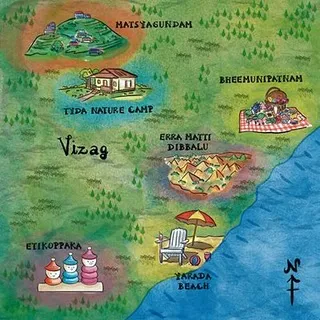
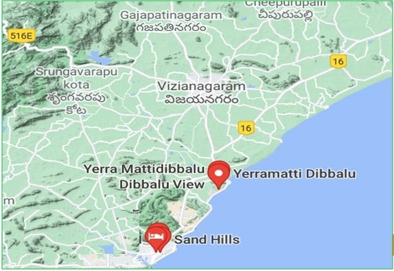
Source :
Where to use :
Paper 1 ( Geography ) : Landform evolution and topography
Fortnightly KOSMOS MCQs Practice - 24th September 2024
Q1. Consider the following statements about the Gangetic river dolphin:
- They are found in the Ganges-Brahmaputra-Meghna and Karnaphuli-Sangu river systems.
- They exclusively inhabit freshwater and hunt using subsonic sounds.
- They are protected under Schedule I of the Indian Wildlife (Protection) Act, 1972.
Which of the above statements is/are correct?
- 1 and 3 only
- 1 and 2 only
- 2 and 3 only
- 1, 2, and 3
Q2. Consider the following statements related to Atacama Desert:
- It lies between the Cordillera de la Costa mountain range and the Andes Mountains.
- Its central area is characterized by salt flats.
- It is abundant in minerals such as lithium, copper, and iodine.
How many of the above statements is/are correct?
- Only one
- Only two
- All three
- None
Q3. Consider the following statements about cyclones in the Arabian Sea:
- Cyclones develop over warm ocean waters where rising moist air generates a low-pressure system that strengthens due to the Coriolis effect.
- Cyclones in the Arabian Sea are generally weaker than those in the Bay of Bengal.
- India named Cyclone Asna, the latest cyclonic storm in the Arabian Sea.
Which of the statements given above is/are correct?
- 1 and 2 only
- 2 and 3 only
- 1 and 3 only
- 1, 2, and 3
Q4. Consider the following statements regarding maize cultivation in India:
- Maize is the third most significant food crop in India, accounting for roughly 25% of the national food supply.
- The United States is the world's leading producer of maize.
- Maize can be grown during Kharif, Rabi, and Spring seasons, with productivity being lower in Kharif compared to Rabi.
Which of the statements above is/are correct?
- 1 and 2 only
- 1 and 3 only
- 2 and 3 only
- 1, 2, and 3
Q5. Consider the following statemenst:
- Tropical cyclones feature a distinct eye, which is absent in temperate cyclones.
- Tropical cyclones impact a smaller area compared to temperate cyclones.
- Temperate cyclones develop only over seas with temperatures above 26-27 degrees Celsius and dissipate once they make landfall.
Which of the statements above is/are correct?
- 1 and 2 only
- 2 and 3 only
- 1 only
- 1, 2, and 3
Q6. The Wajrakarur Kimberlite Pipe and Krishna River basin are frequently mentioned in the news for their association with which of the following?
- Oil exploration
- Coal reserves
- Diamond mining
- Natural gas deposits
Q7. Consider the following statements about National Mission for Edible Oils – Oil Palm (NMEO-OP):
- The initiative seeks to increase oil palm cultivation and enhance Crude Palm Oil (CPO) production by establishing a value chain ecosystem, including viability price support, for the development of the oil palm sector.
- India is the world's second-largest consumer of edible oil and one of its biggest importers.
- Andhra Pradesh, Telangana, Karnataka, and Mizoram are the leading oil palm-producing states in India.
How many of the above statements is /are not correct?
- Only one
- Only two
- All three
- None
Q8. Consider the following statements about the Amazon Rainforests:
- These expansive tropical rainforests cover the drainage basin of the Amazon River and its tributaries in northern South America.
- They are bordered by the Guiana Highlands to the north, the Andes to the west, the Brazilian central plateau to the south, and the Atlantic Ocean to the east.
Which of the statements given above is/are correct?
- 1 only
- 2 only
- Both 1 and 2
- Neither 1 nor 2
Q9. Project REPLAN, recently in the news, is related to which of the following?
- Reviving traditional agricultural practices
- Regeneration of degraded forest land
- Recycling of plastic waste into usable products
- Rehabilitation of displaced communities
Q10. Consider the following statements about Dodo bird:
- The Dodo was a flightless bird indigenous to the island of Madagascar.
- Human activities, including habitat destruction and the introduction of invasive species, contributed to the Dodo’s extinction.
- The Dodo vanished in the 17th century.
Which of the statements given above is/are correct?
- 1 and 2 only
- 2 and 3 only
- 1 and 3 only
- 1, 2, and 3
Share the article
Edukemy’s Current Affairs Quiz is published with multiple choice questions for UPSC exams
MCQ
Get Latest Updates on Offers, Event dates, and free Mentorship sessions.

Get in touch with our Expert Academic Counsellors 👋
FAQs
Geography Current Affairs focuses on the contemporary issues, events, and developments in the field of geography. It covers recent geographical phenomena, environmental changes, geopolitical shifts, and related news. This differs from regular geography studies which may focus more on foundational concepts, historical contexts, and theoretical frameworks.
Updates are provided regularly to ensure that subscribers stay informed about the latest developments in geography. Typically, updates are provided on a fortnightly basis, depending on the frequency of significant events and changes in the field.
Absolutely. Geography Current Affairs serves as a valuable resource not only for Geography optional but also for GS papers, especially GS Paper 1 (covering Indian Heritage and Culture, History, and Geography of the World and Society) and GS Paper 3 (covering Technology, Economic Development, Biodiversity, Environment, Security, and Disaster Management). It aids in building a holistic understanding of various topics and strengthens answer-writing skills by incorporating contemporary examples and perspectives.
Geography Current Affairs holds immense importance for UPSC preparation, particularly for aspirants opting for Geography optional. It helps candidates stay updated with the latest developments, geographical phenomena, environmental issues, and geopolitical shifts worldwide, aligning them with the dynamic nature of the subject as tested in the UPSC examinations.

